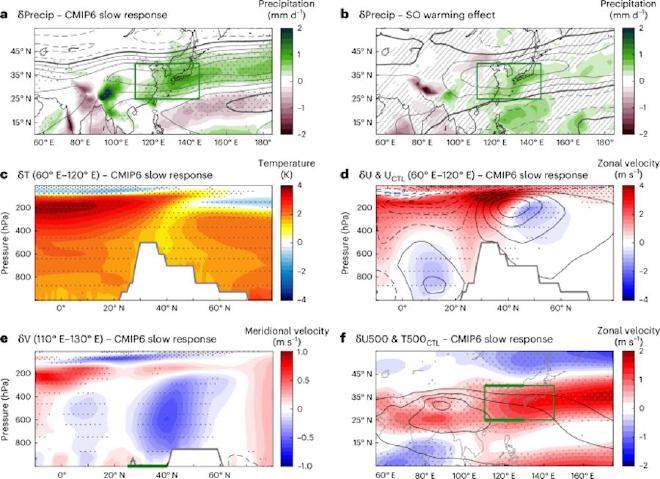

These teleconnections between the tropical Pacific and far-flung areas are reported in a Cornell University-led computer-model study published in Nature Geoscience.
While other computer models have projected similar precipitation increases generated by a warming Southern Ocean, major uncertainties and a wide range of predictions exist between models.

The new study serves to reduce those uncertainties, which could improve predictions of global mean temperatures and regional precipitation.
“We needed to find the cause of those uncertainties,” said Hanjun Kim, the study’s co-corresponding author and a postdoctoral associate working with co-authors Flavio Lehner and Angeline Pendergrass, both assistant professors of atmospheric sciences at Cornell’s College of Agriculture and Life Sciences (CALS). Sarah Kang, professor in the Max Planck Institute for Meteorology in Hamburg, Germany, is the paper’s other corresponding author.
“I found that low-altitude cloud feedbacks over the Southern Hemisphere can be one cause of those uncertainties in remote Northern Hemisphere regional precipitation,” Kim said. “If we try to reduce the uncertainty of Southern Hemisphere cloud feedbacks, then we can also improve the prediction of global mean temperatures.”
“We can occasionally see these processes today, which allows us to study them,” Lehner said, “but we expect in the future for these processes to switch from being an occasional occurrence to being a more permanent state of the system.”
Kim found that low-lying clouds over the Southern Ocean act as a key regulator affecting sea-surface temperatures. Accounting for these cloud feedbacks in climate models help explain the uncertainties and variations from one model to another, according to the study.
There are few observational facilities in Antarctica to provide data on cloud feedbacks in the Southern Ocean, so increasing those would in turn improve predictions, Kim said.
The study was funded by the National Oceanic and Atmospheric Administration from USA, and by the Ministry of Science and ICT (Information and Communication Technology), South Korea.
- The paper Higher precipitation in East Asia and western United States expected with future Southern Ocean warming was published in Nature Geoscience. Authors: Hanjun Kim, Sarah M. Kang, Angeline G. Pendergrass, Flavio Lehner, Yechul Shin, Paulo Ceppi, Sang-Wook Yeh & Se-Yong Song

